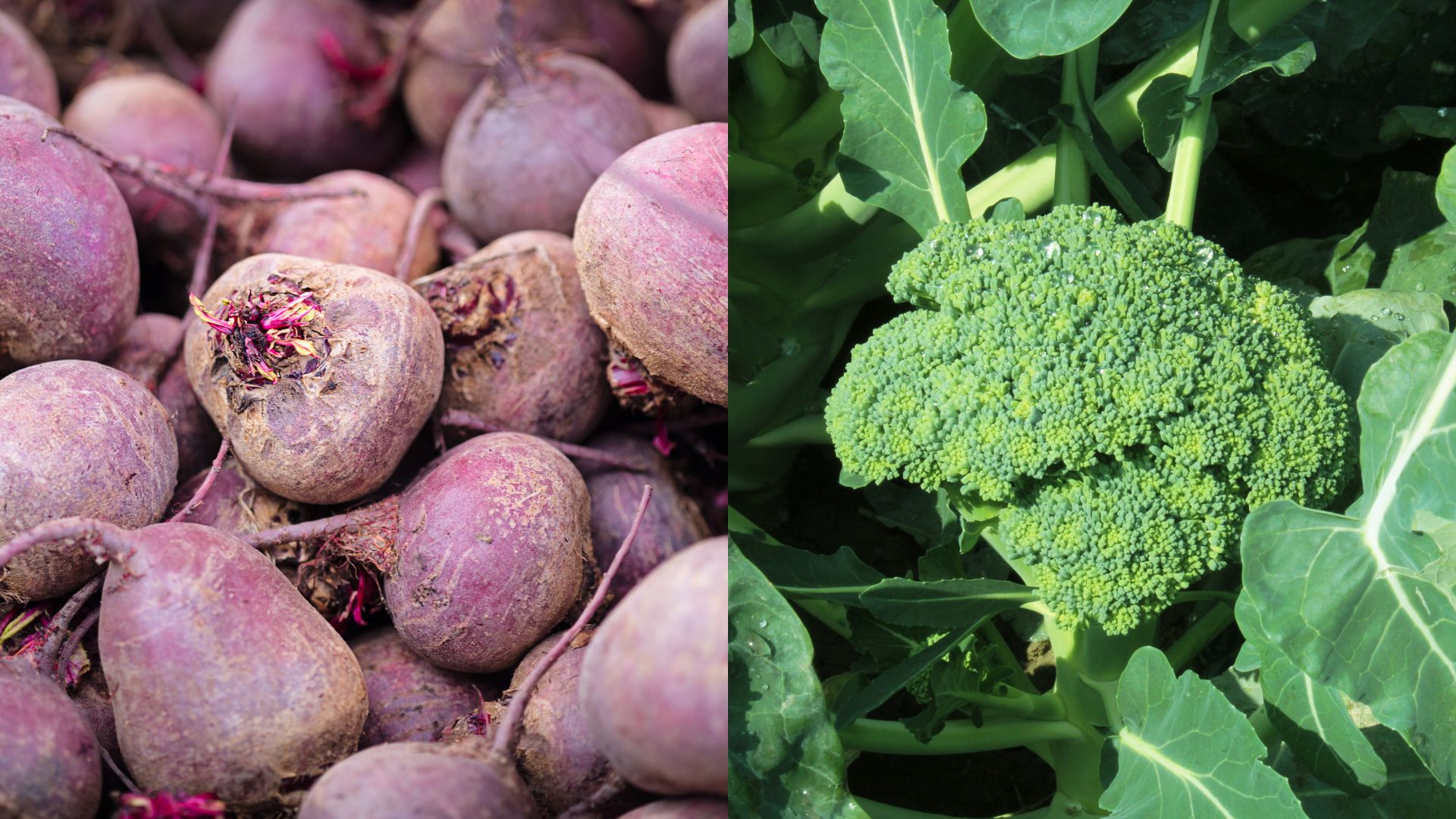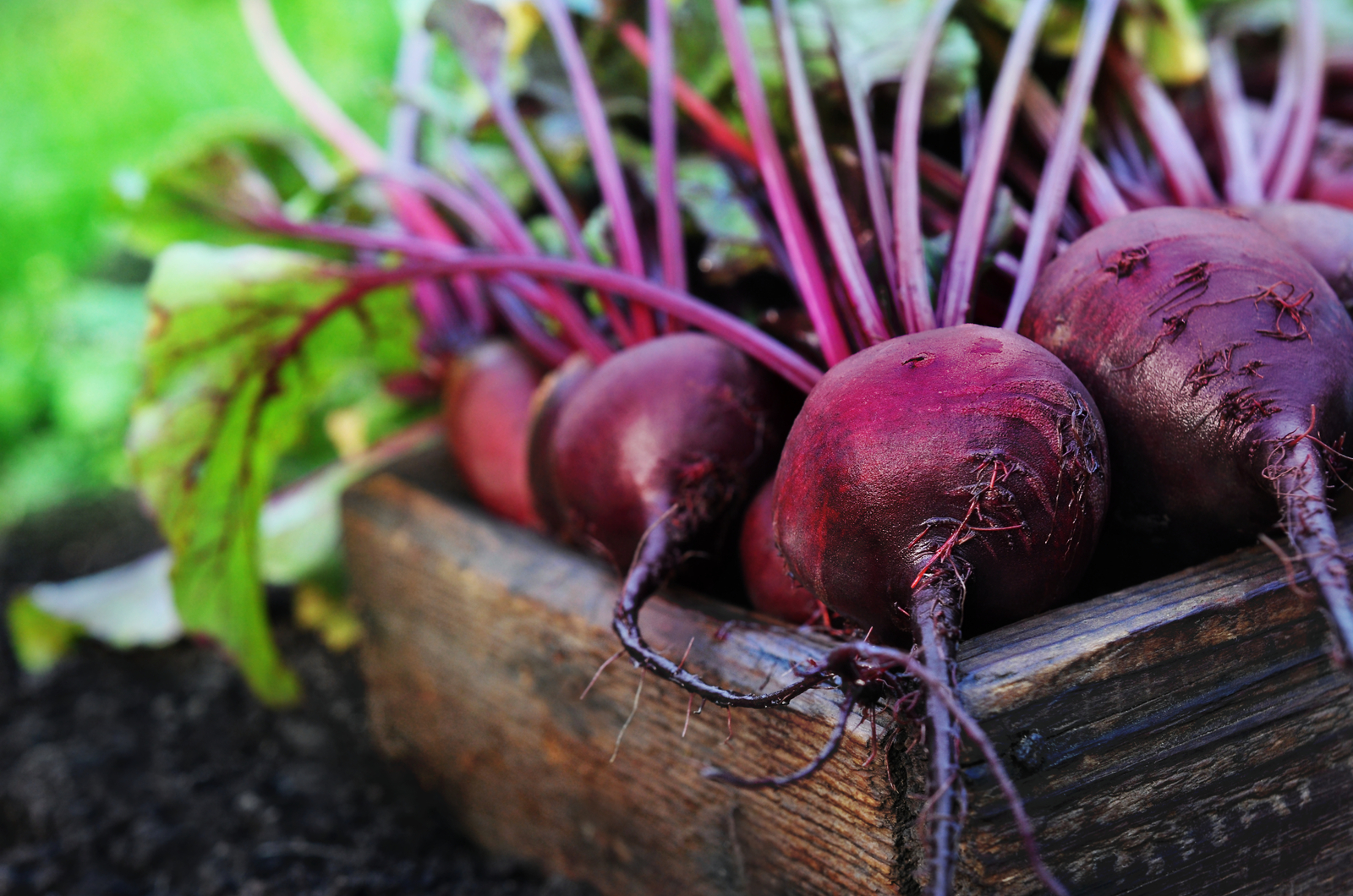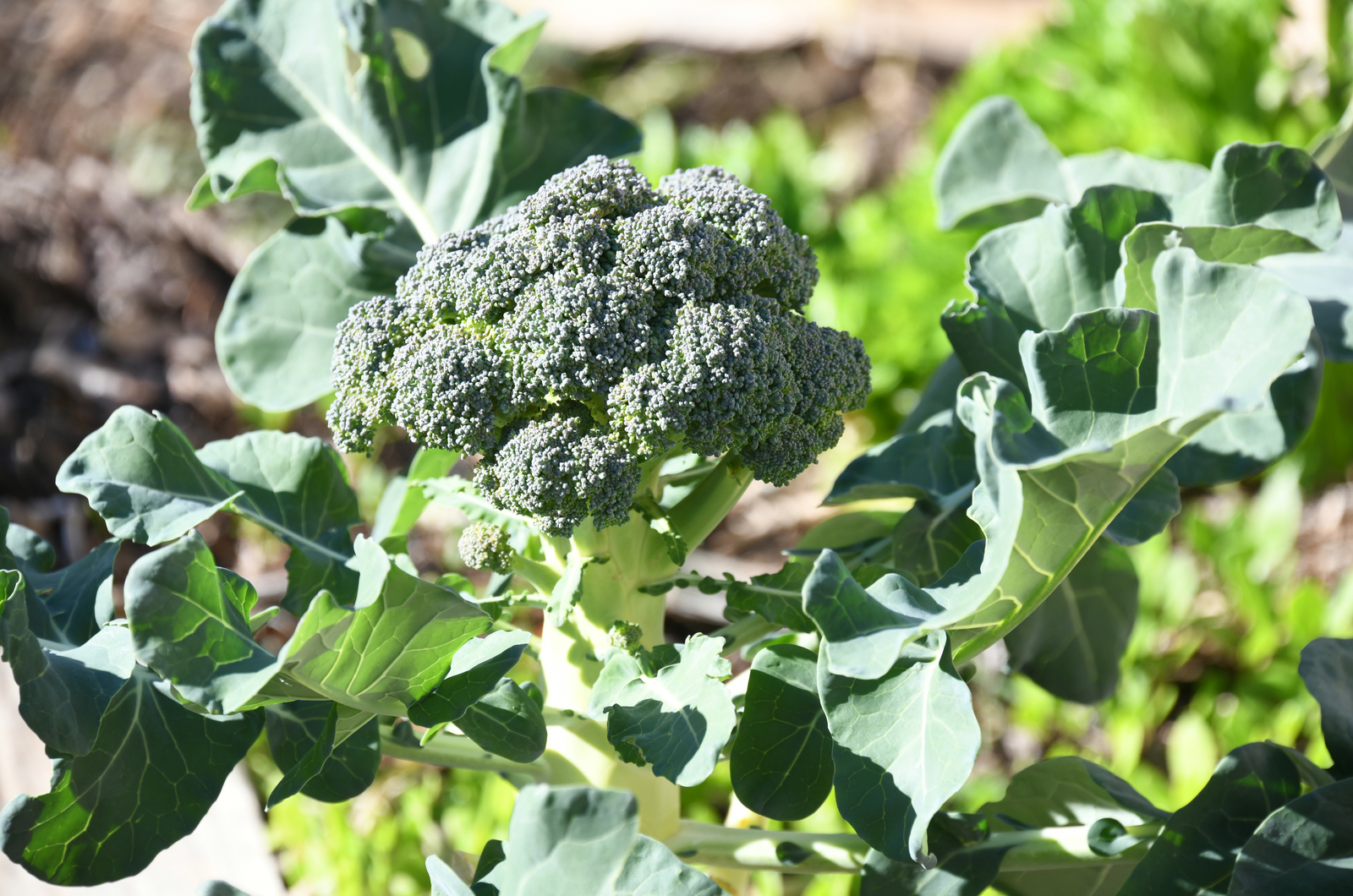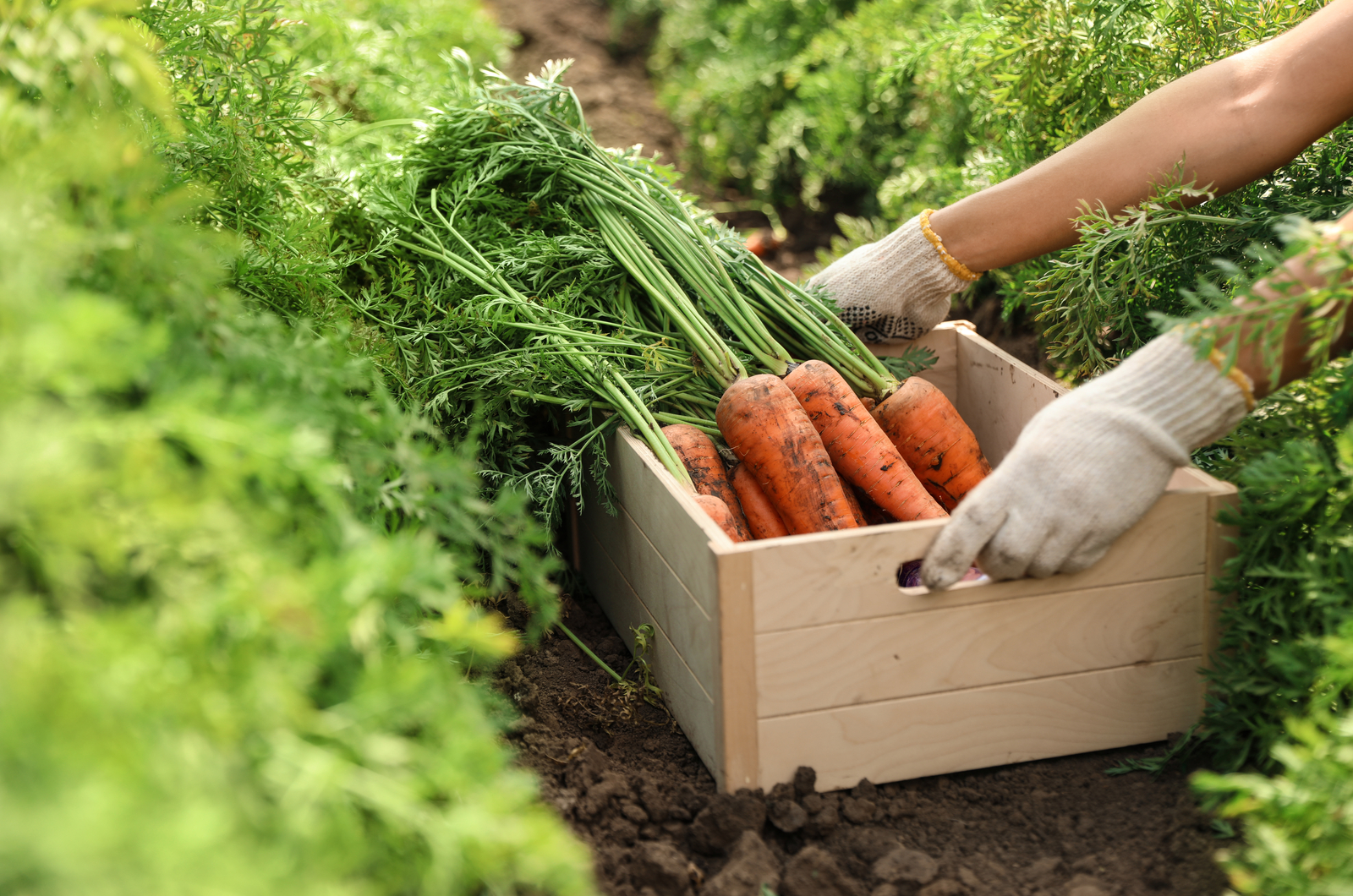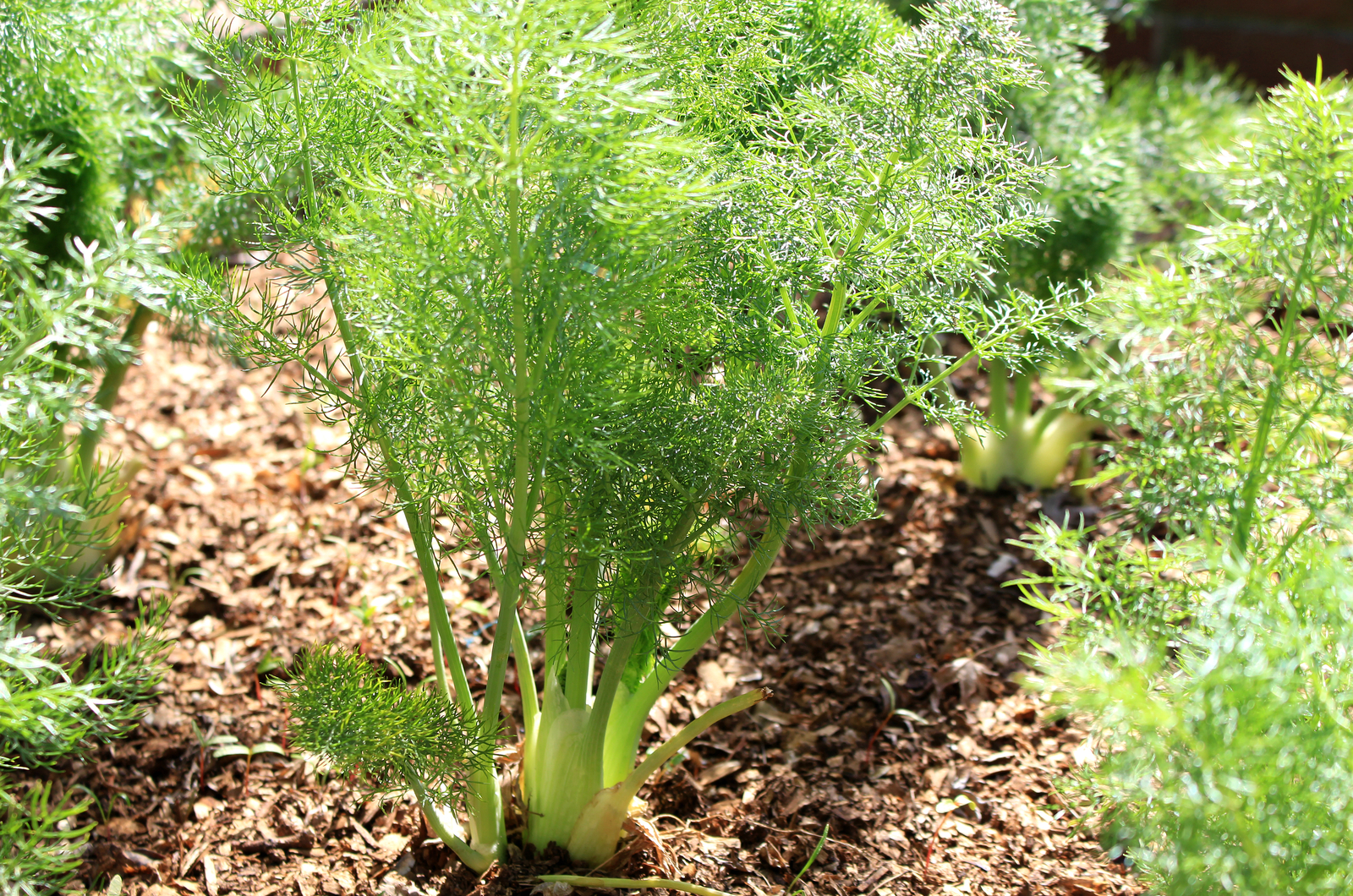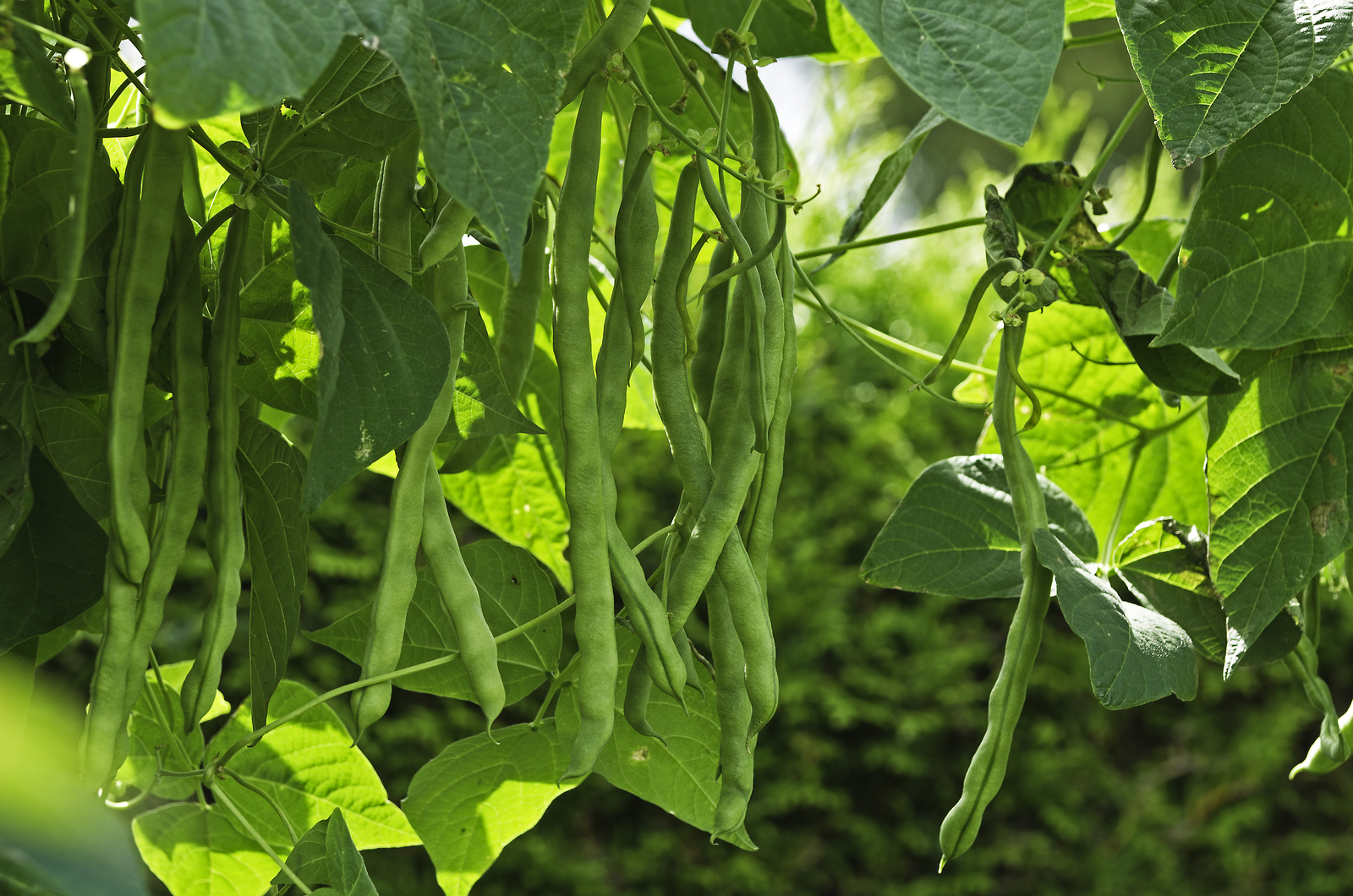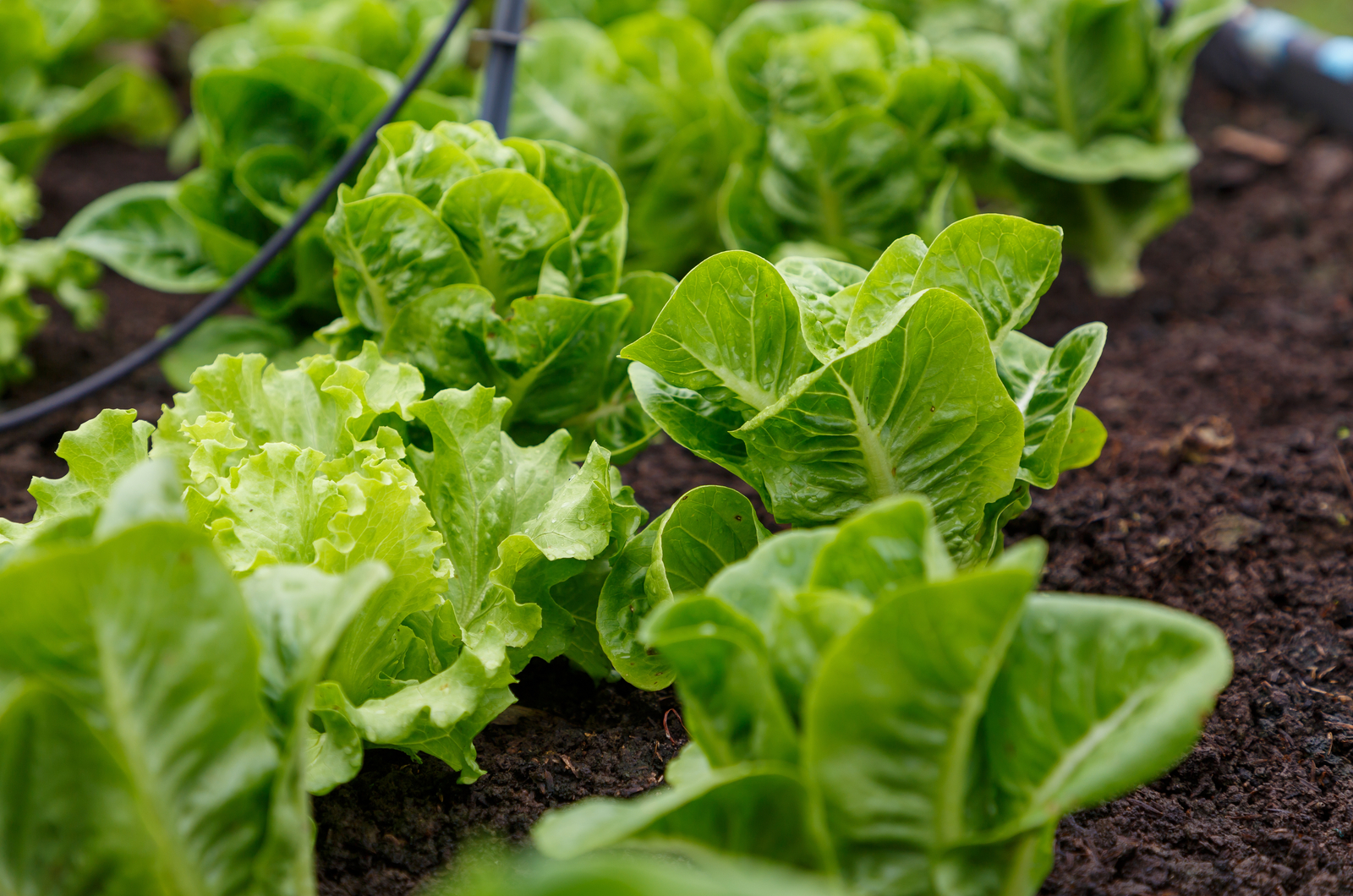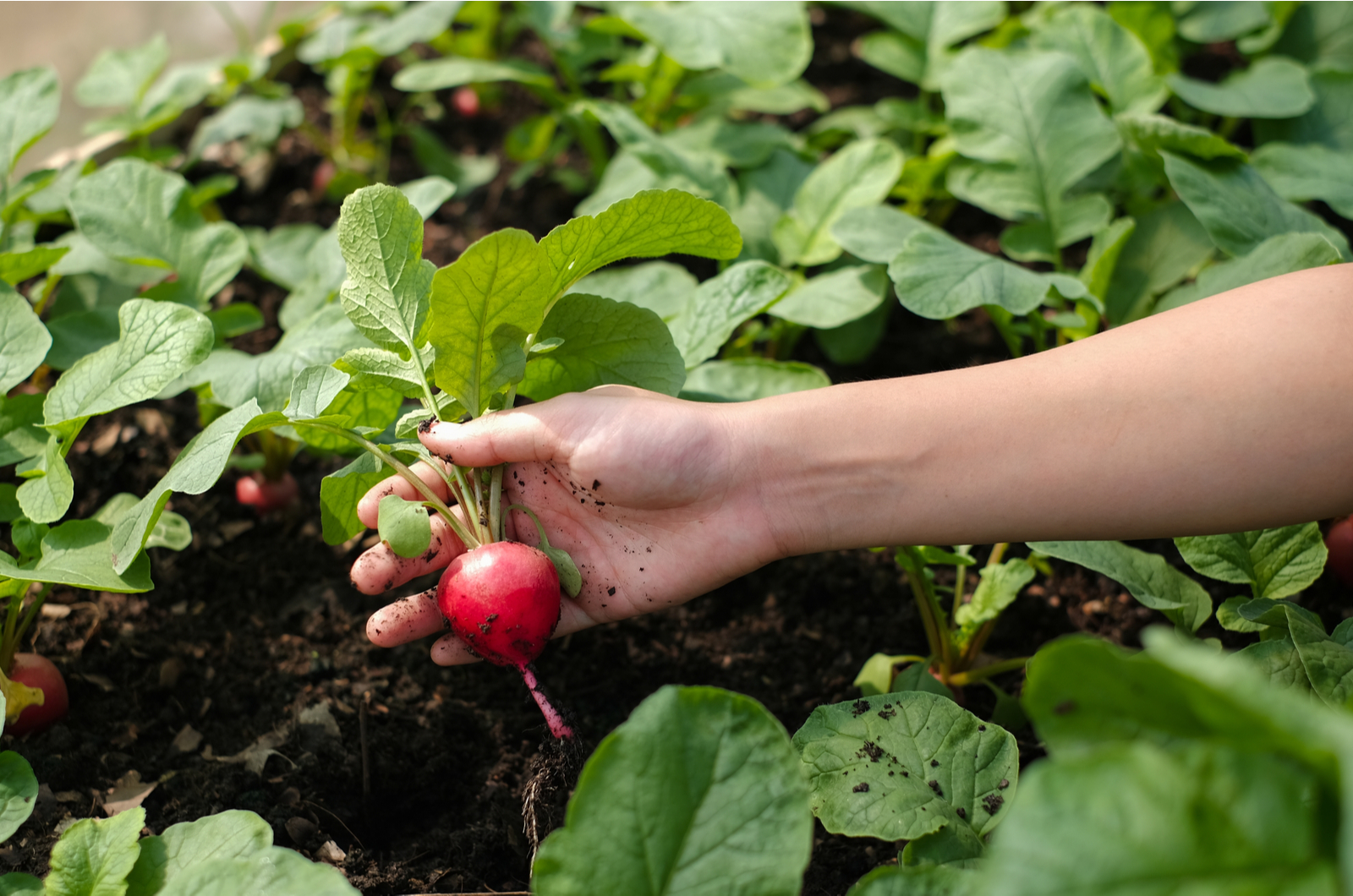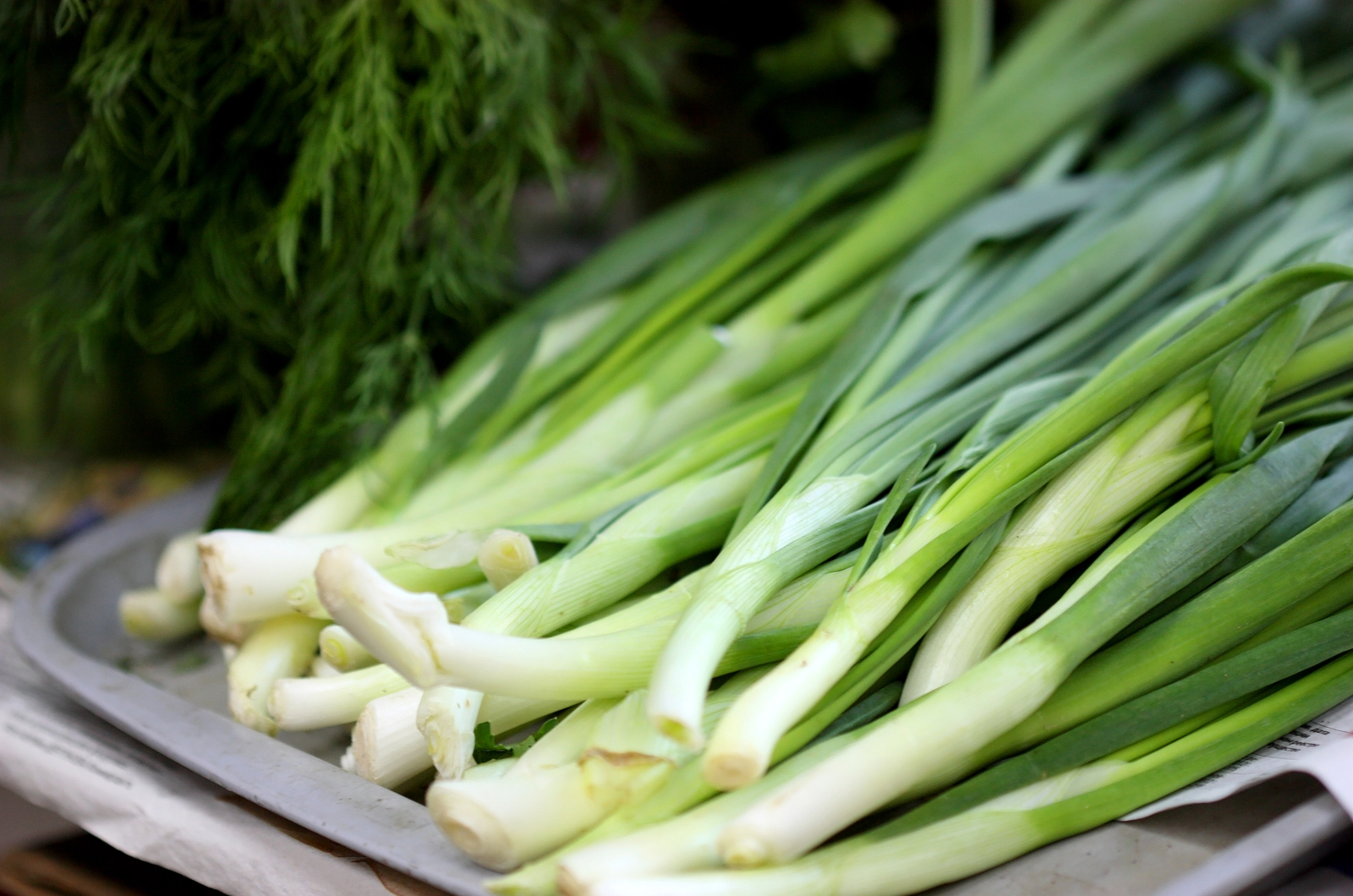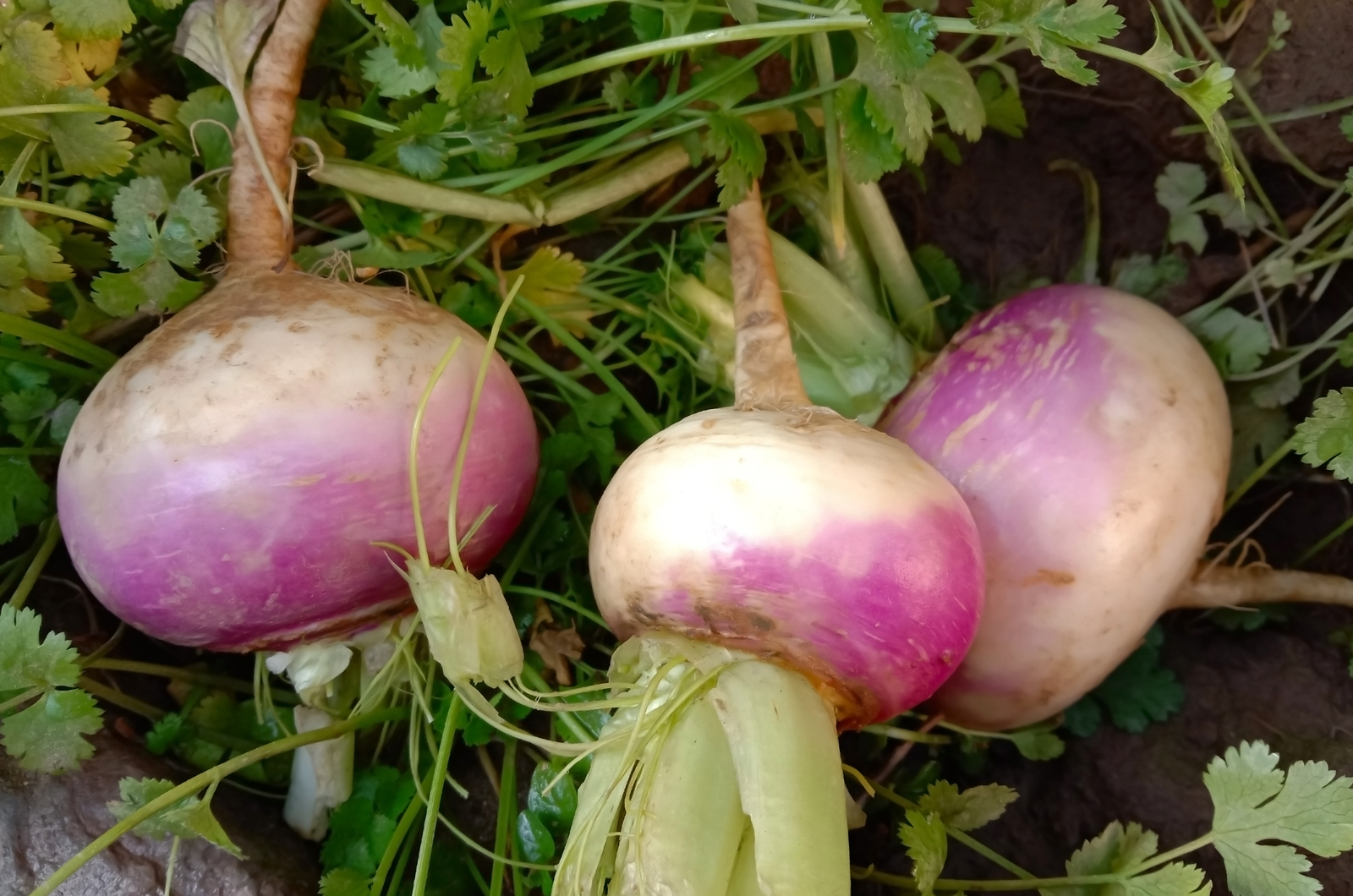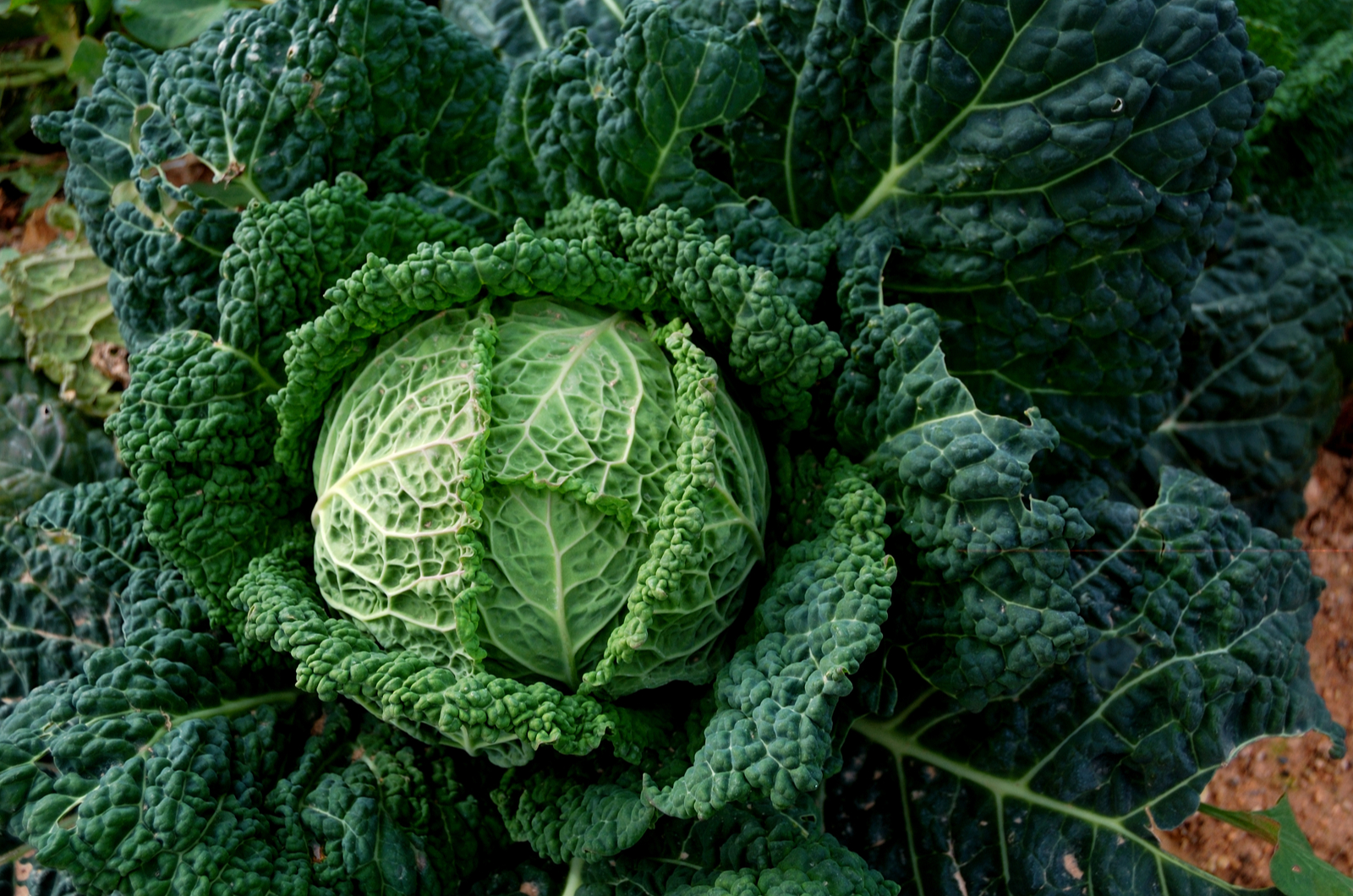You’d think summer is the time to relax and enjoy the fruits of your hard spring labor, but that may not be entirely true.
In fact, July’s one of the best months to start preparing your plot for the fall season; and that includes planting autumnal veggies.
Plant the seeds directly into the ground, and enjoy your carrots, turnips, and cabbage all throughout fall and winter.
Let’s dive in!
10 Best Veggies You Can Plant In July
Now’s the time to start your fall garden, and that includes planting cool-season veggies such as lettuce and leafy greens, broccoli, etc.
Plant your favorite fall veggies and enjoy them in the cooler season.
Here’s a short list to get you started!
1. Beetroots
I know beetroot isn’t everyone’s favorite veg, but it’s perfect for summer salads and warm fall dishes.
You can grow them indoors all year long or sow them in July for an autumnal harvest.
Choose a variety you like the most, such as the sweet ‘Boltardy’ and plant the seeds thinly into foot-spaced rows. You can also sow the beetroots in blocks and thin them later to about 2 inches.
Choose a sunny spot for these veggies with nutrient-rich and well-drained soil. Thin them to 4-5 inches once they germinate and water them regularly to prevent bitter taste. An inch per week is more than enough.
Mulch the soil around the plants once they’re large enough to preserve moisture and prevent weed growth.
Just make sure to avoid some common beetroot growing mistakes and you’ll easily get to the harvest time.
Finally, watch out for pests like leaf miners. They can decimate the leaves, but if you grow beetroots only for their delicious roots and not salad greens, you don’t have to worry about them.
2. Broccoli
Broccoli is my favorite cool-season vegetable and you can plant it in July to harvest it before the first fall frost.
Just make sure to water it properly, and you’ll get a delicious product in the fall.
Space your plants about 12-18 inches apart in rows 2-3 feet apart for optimal results. You can grow broccoli closer together, but the main head and side branching will be reduced.
Plant it in a full sun location, a nutrient-rich and well-drained substrate, and mulch it afterwards to improve water-retention and prevent weed emergence.
Note: You can grow broccoli in containers and raised beds successfully, which is especially useful if you don’t have enough space in your vegetable garden.
3. Carrots
A good thing about carrots is that they can be ready for harvest in as little as ten weeks, especially if you plant them during warm temperatures between May and July.
Smaller varieties will mature quicker, so choose them if planting later in the season. You should also watch out for carrot flies. There are many different companion plants for carrots, but rosemary can deter carrot flies, allowing you to fight pests in a natural way.
These veggies love loose sandy loam with enough room to grow deep and strong roots. Sow the seeds about half an inch deep and space them properly for optimal growth.
The key is to leave a couple of inches between each carrot, and if you’ve accidentally sown them too close, you can always thin them out once they grow a bit.
It’s important to give each plant enough space so that they don’t compete for nutrients and have enough room to develop their delicious roots.
Note: If you don’t have enough space in your garden or the soil is too heavy, you can grow carrots in pots or raised beds.
4. Florence Fennel
This veg (or herb, depending on whether you grow it for its leaves or roots) is a perfect crop for June and July planting.
It needs warm temperatures, so you can sow it directly outdoors to be ready for harvest in late summer or early fall.
Space the rows a foot apart and thin the seedlings to the same distance to ensure proper growth. You can grow Florence fennel at a shorter spacing (4-6 inches apart) if you don’t have enough space.
Keep your veg well-watered to prevent bolting, mulch it to hold moisture and suppress weeds, and create a mound around the root as it increases in size.
5. French And Runner Beans
You can still enjoy beans in the heat of summer if you choose suitable varieties. And French and runner beans fall into this category.
Dwarf French beans are perfect for smaller gardens as they don’t require trellising, and both French and runner beans are suitable for containers or raised beds.
The only difficult thing about them is that you’ll have to irrigate them religiously – probably twice a day.
Plant them in a sunny site sheltered from winds and water them regularly to encourage strong and deep roots. Sow the seeds about 3-4 inches apart and 1-2 inches deep, and protect them from common pests, such as aphids and bean beetles.
Harvest the pods regularly once they mature and the plant will reward you with more pods until temperatures become too cold.
6. Lettuce And Leafy Greens
There are many leafy greens to choose from, such as spinach, lettuce, bok choy, etc.
If you decide on lettuce, you’ll be glad to hear that it only takes a couple of weeks to mature, and you’ll be harvesting your first batch during summertime.
Simply choose a location with dappled shade to protect it from the scorching sun and plant it into well-drained and humus-rich soil.
Space the seeds evenly and sow them to a depth of half an inch, watering them slowly afterwards.
Thin the seedlings once to provide enough room for the mature plant size and keep the plant consistently moist. Mulching can help you improve water retention and suppress weeds, so don’t skip this step.
Finally, to keep your lettuce safe from snails, slugs, and other pests, use barriers or some homemade organic sprays and solutions.
These same tips work for other leafy greens, too. Additionally, you can plant them in smaller containers and take them indoors over winter to have them producing for longer.
7. Radishes
What I love about radishes is that they grow quickly and are ready for harvest about six weeks after sowing.
And they’re ideal for in-ground gardens, raised beds, or large planters!
Since radishes grow very fast (and are easy to grow), you can sow them every three weeks and get a rich harvest out of them.
They prefer cooler conditions, especially when sowing in July, so make sure to plant them in a location where they will avoid the harsh mid-summer sun.
Space the seeds about 1-2 inches apart, bury them to a depth of half an inch, and thin them out to 3-4 inches once they turn into young seedlings.
8. Scallions
If you want a veg that’s super easy to grow and perfect for beginners, then try scallions. They are ready for harvest about eight weeks after planting, and you can grow them in containers, raised beds, or window boxes if you don’t have a lot of room.
Plant them in a spot with full or partial sun in July and make sure you amend the soil with plenty of organic matter beforehand.
Space the seeds about 1-2 inches apart and consider planting them every couple of weeks for a never-ending harvest.
Just remember to harvest them before they start producing bulbs. Remove the top and leave the roots in the ground to push out new growth and extend the harvest.
9. Turnips
Turnips are perfect for July planting because they have a long harvesting season and last well into the winter. So don’t forget to add them to your garden every once in a while to get a large yield afterwards.
Turnips are ready for harvest in about six weeks and you can eat the entire plant – leaves and roots.
Sow them directly into warm soil and thin them to about 3-4 inches once the seedlings emerge.
Make sure to water the turnips regularly, keeping the substrate consistently moist, especially during the early stages.
10. Winter Cabbage
If you want to enjoy salads in the cool winter months, then don’t forget to sow some winter cabbage seeds in July.
Plant it in a humus-rich and well-drained soil where it can get plenty of sunlight to get it going through the winter.
Sow the seeds to a depth of half an inch and keep the soil moist, but not soggy. Initial watering is important because it will hydrate the seeds and allow them to settle down and emerge when the time comes.
And once the seeds germinate and seedlings appear, thin them to about 1-1.5 feet, depending on the requirements of your variety.

